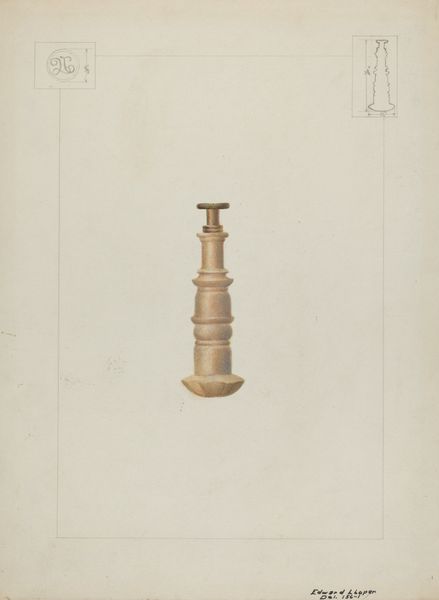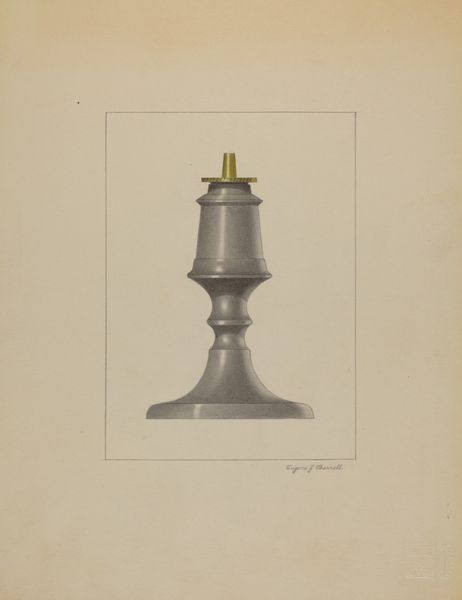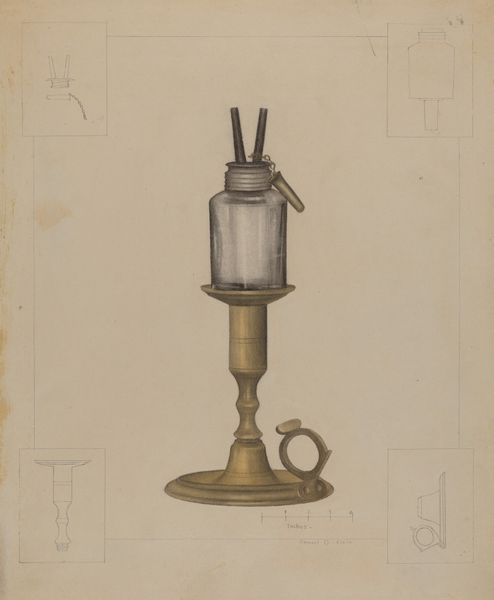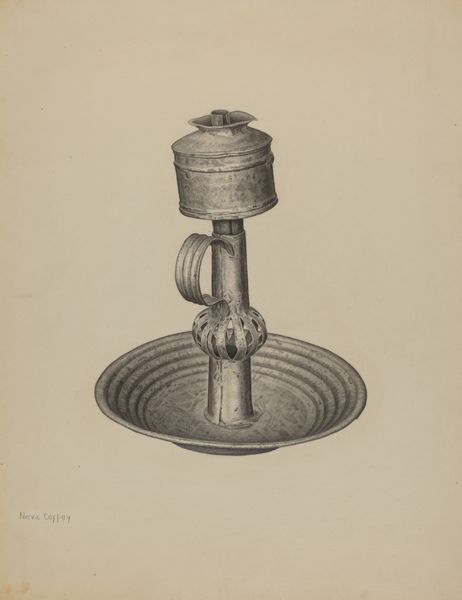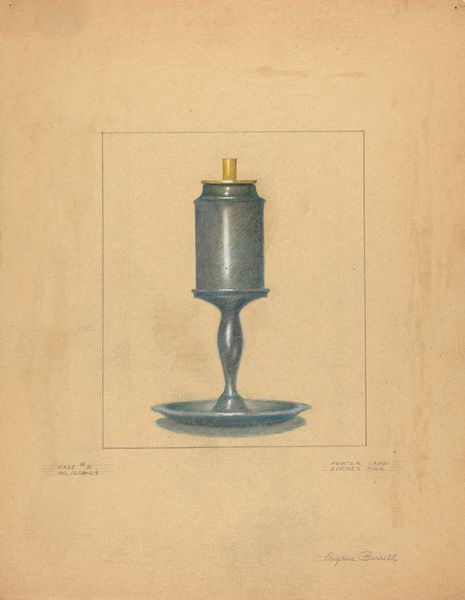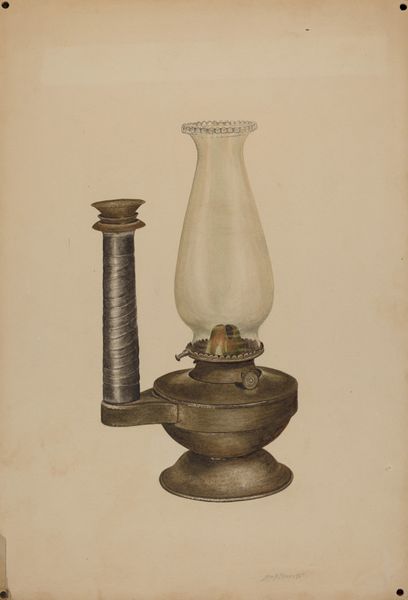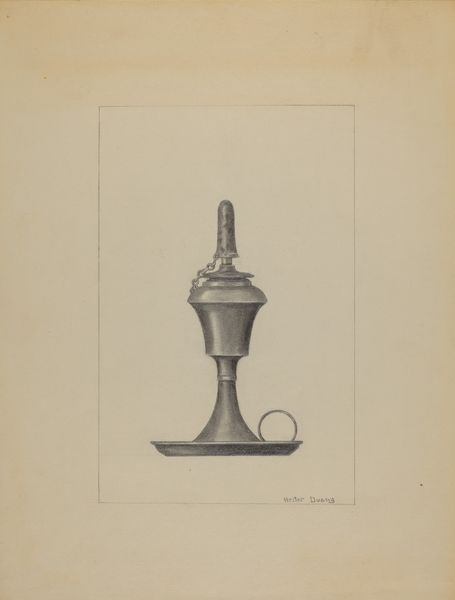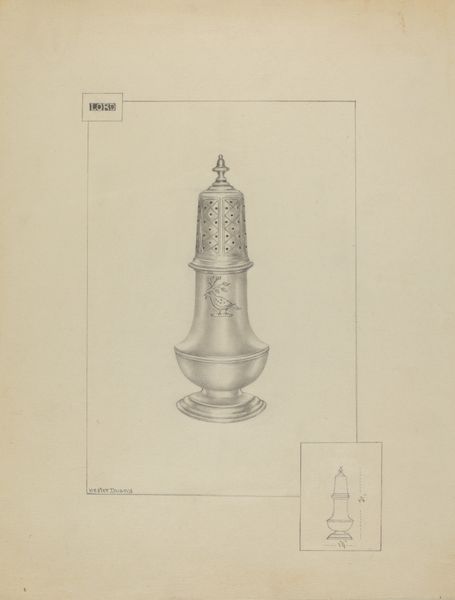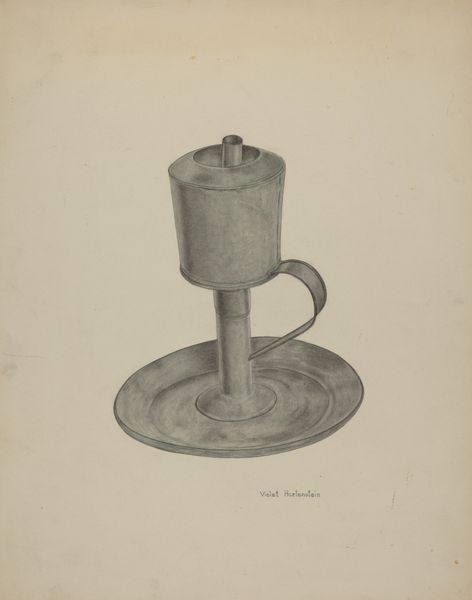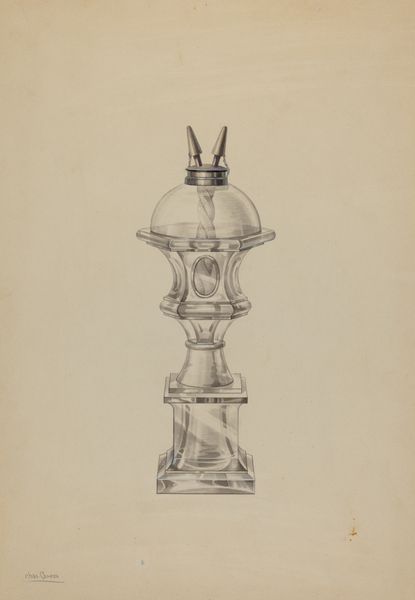
drawing, coloured-pencil, paper, pencil
#
drawing
#
coloured-pencil
#
paper
#
pencil
#
modernism
#
realism
Dimensions: overall: 35.6 x 26.6 cm (14 x 10 1/2 in.)
Copyright: National Gallery of Art: CC0 1.0
Editor: This is Harry Mann Waddell’s "Butter Mold," drawn around 1940, using pencil and colored pencil on paper. It feels like a technical drawing, but there’s also something… nostalgic about it. What catches your eye when you look at it? Curator: It evokes the idea of memory being reconstructed. Look at how the object, the butter mold, is rendered realistically, almost photorealistically, but it's juxtaposed with these schematic drawings. They represent different modes of seeing, don’t they? The realistic rendering captures the object's presence, its lived history, while the schematics offer an abstract, almost blueprint-like perspective. Editor: That makes me think about how we remember things. We recall details vividly, but also construct simplified versions in our minds. Curator: Precisely! And consider the butter mold itself. It’s a symbol of domesticity, of a certain way of life, particularly during the 1940s when this was drawn. Does the juxtaposition suggest something about how we were already beginning to think of these simpler times in memory? Editor: It’s interesting you say that. The object is very mundane. The artist probably wasn't using butter molds; rather, they're pointing to a collective identity. Curator: It's not merely a representation of a butter mold, but perhaps a meditation on how everyday objects carry significant emotional and cultural weight. An illustration can echo many emotional qualities that are embedded in shared practices. How does this consideration change your view of the artwork? Editor: It adds layers that I didn't notice at first, about shared cultural experiences. I went from seeing it as just an illustration to noticing those embedded histories and experiences. Curator: Exactly, the drawings act as reminders, not only for the practical object they represent, but for its encoded symbolism.
Comments
No comments
Be the first to comment and join the conversation on the ultimate creative platform.

